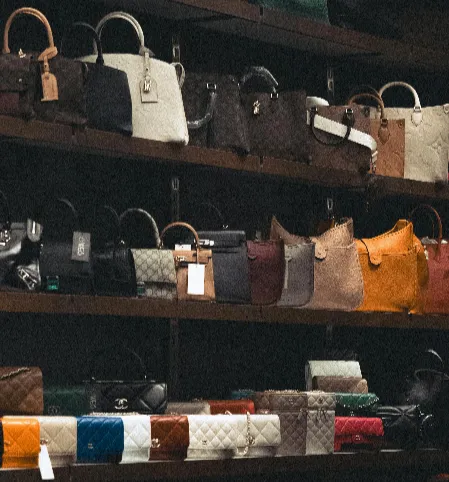Why luxury fashion is the best investment for women

Buying luxury items is the smartest Investment you’ll make this year
Image: Pexels
There was a time when women splurging on a luxury handbag or watch was considered pure indulgence.
But in 2025, smart women know that buying designer isn’t just about style - it’s about investing.
In fact, investing in timeless pieces could be one of the savviest financial moves you make.
According to the 2025 State of the Luxury Market in Africa report, while spending across the luxury sector dipped by 1%, Luxity, a local luxury goods reseller, who saw a 28% increase in retail sales in 2025.
The modern luxury shopper isn’t chasing trends or social media status. She’s curating a collection that tells a story - one that combines taste, longevity, and a little financial savvy.
Buying luxury isn’t just about having style. It’s about having a strategy.
So go ahead - buy the bag, wear the watch, flaunt the bracelet. Just remember: in the right hands and on the right wrist, luxury really can pay off.
The numbers reveal a shift in how South Africans are shopping, especially women who are treating their wardrobes like well-curated investment portfolios.
“Luxury buyers are becoming strategic,” says Michael Zahariev, co-founder of Luxity. “They understand when to buy new, and when pre-owned gives them better value or faster access. It’s less about the rush of owning and more about the return on owning.”
And that’s exactly what’s happening: women are learning to shop with their heads as much as their hearts.
The art of buying well
Each luxury category has its own performance profile. Think of it like fashion’s version of the stock market, with handbags, watches, and jewellery each offering their own kind of return.
Watches to invest in
Watches lead the way. Rolex remains the undisputed gold standard, with pre-owned models now selling for an average of 126.5% of their retail value after this year’s price hikes - proof that good taste really can pay off.
Panerai (79.2%) and Hublot (74.3%) also show impressive resale strength, giving collectors strong entry points into the world of investment timepieces.
Handbags
Handbags are considered to be the blue-chip stocks of fashion. Goyard (73.3%), Chanel (72.3%), and Louis Vuitton (70.6%) bags hold their value well.
Though most resell around 25–30% below retail, their consistent demand means they remain liquid assets - easy to sell and always in style.
Jewellery
Then there’s the jewellery market, quietly dazzling investors as the stealth-wealth category. Van Cleef & Arpels (79.2%), Cartier (76.7%), and Hermès (71.9%) pieces have shown exceptional resilience, with some collections appreciating by as much as 10% annually.
Luxury that you can enjoy
Unlike fast fashion, which depreciates the second you step out the door, luxury items are like wearable assets - a soft currency that preserves value and, in some cases, appreciates.
Zahariev explains that while luxury has always had an emotional appeal, today’s buyers are treating it with the same analytical mindset they’d apply to property, art or equities.
“The modern collector understands the economics behind it,” he notes. “They’re measuring performance with patience and intent.”
So yes, that Chanel flap bag might look like a splurge - but it’s also a smart move in a volatile economy.
Be informed
For those ready to shop smarter, a few expert tips can make all the difference.
- Follow the data: Keep track of resale analytics to know which brands consistently hold their value.
- Buy the full set: Boxes, certificates and receipts can increase resale value by up to 20%.
- Time your buys: Retail price hikes usually ripple into resale markets a few months later.
- Focus on scarcity: Limited editions, discontinued lines, and heritage icons appreciate faster.
- Shop verified: Provenance matters - authenticity is the key to liquidity.
IOL Lifestyle
Related Topics: